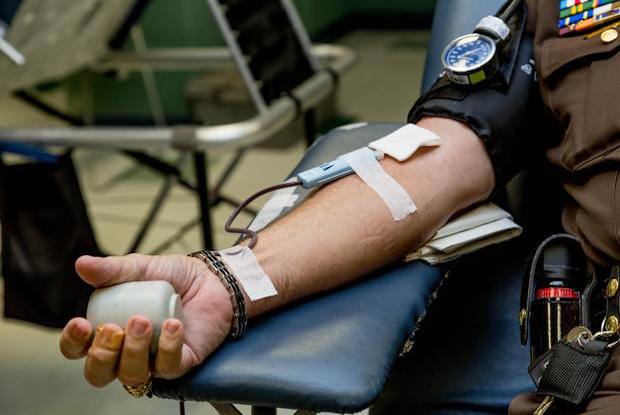Table of Contents
I. The importance of blood thinners
II. What to avoid while taking blood thinners
IV. Communication with your doctor
The importance of blood thinners
Blood thinners (anticoagulants) are a standard part of treatment plans for millions of people in the United States. Blood thinners like Xarelto are required for many conditions and typically have to be taken every day. Anticoagulants can stop blood clots from forming, slow down the formation of blood clots, as well as stop clots from getting bigger. If you are at risk for blood clots, you can visit Canada Meds United to save money on expensive maintenance medications like Xarelto.
The reason for taking blood thinners varies from person to person, but several conditions require the use of these drugs. Some risk factors for blood clots include:
- Certain heart or blood vessel diseases
- Congenital heart defects
- Heart valve replacement
- Recent surgery or injury
- Abnormal heart rhythm (atrial fibrillation)
- Being confined to a hospital bed
Blood thinners keep the blood from sticking together in the veins and arteries. When blood cells stick together, they form semi-solid masses in the artery. These masses can shear off artery walls and travel in the bloodstream to the heart or lungs, which can cause serious health problems and sometimes death.
Get savings updates for Xarelto
As you can see in the above list, there are several reasons why a person may need blood-thinning medication. Heart problems are often lifelong, so people need to maintain a healthy lifestyle and take proper measures to avoid any side effects of long-term blood thinner use. [1]

What to avoid while taking blood thinners
Because blood thinners are often taken for long periods, people may have to tailor parts of their life to make sure they are healthy while taking these drugs. Generic Xarelto (rivaroxaban) is not currently available in the United States or in Canada, however, now you can obtain safe and approved generics from other countries through an online pharmacy referral service like Canada Meds United at discount prices. You can save up to 90 percent on your prescriptions today. The National Blood Clot Alliance (NBCA) recommends:
A consistent diet: It is always a good idea to eat a balanced diet, but it is a vital part of a treatment plan that involves blood thinners. You should not make sudden changes to your diet while on these drugs because they can affect the absorption of the drug. It is essential to eat a consistent diet and avoid adding foods high in vitamin K. Foods high in this vitamin, like kale and prunes, can interfere with your blood thinner.
No over-the-counter (OTC) medications: It is typically not a big deal to take a quick over-the-counter pain reliever, but it can be dangerous if you are taking a blood thinner. Always consult your doctor before taking any OTC medications.
Avoiding herbs and supplements: Certain vitamins and minerals may affect the efficiency of your blood-thinning medications. Herbs like chamomile or ginseng can change the way your medicine works. Tell your doctor about any herbs or supplements you regularly consume.
Limiting alcohol: Consuming alcohol can increase the side effects of your blood thinner medications. Hard liquor, wine, and beer can affect how your medication works. Inebriation also increases your risk of injuring yourself, which can lead to excessive bleeding. [2]
Bleeding
It is important to remain cautious while taking blood thinners. This is because blood thinners reduce the amount of thrombin in the blood, which is the substance that causes blood to clot. Less thrombin in the blood makes it more difficult for the blood to clot when you experience a cut or injury.
Although infrequent, bleeding caused by blood thinners can be dangerous and life-threatening. You may experience less serious bleeding issues from common everyday activities like shaving or anything that causes minor cuts.
The risk of bleeding can be reduced in the following ways:
- Be careful when trimming nails or hair.
- Use a soft toothbrush.
- Wear protective gloves when working with tools, like gardening shears.
- Wear shoes to avoid cuts on feet.
- Be cautious while participating in high-risk sports. Always wear a bike helmet and proper safety gear. [3]

a. Unusual bleeding
It is vital to pay attention to any unusual bleeding you may experience while taking blood thinners. Pay attention to the following signs:
- Weakness
- Bleeding from gums or nose
- Severe headache or stomach ache
- Dizziness
- Blood in your urine or stool
- Vomiting or coughing up blood
If you experience these symptoms, then you should seek medical help right away. If you experience a dangerous bleeding problem, then your doctor may administer an “antidote” of vitamin K or a combination of prothrombin complex concentrate (PCC) and fresh frozen plasma. These antidotes encourage clotting and will prevent excessive bleeding. [4]
Communication with your doctor
Blood-thinning medication can be challenging to regulate. Everyone responds differently to these drugs, and your doctor must administer several blood tests to understand your specific condition. Blood thinners are not a cure-all, and you must implement caution as well as healthy choices in your daily life. On Canada Meds United, you can contact us directly if you have any questions about your prescriptions like Xarelto.

Even when your doctor prescribes you a blood thinner, you should continue to keep open communication with your healthcare team. Warfarin patients have to go into the doctor every 2 to 4 weeks to get their blood tested to make sure their medication is working correctly. Medications like Xarelto require less testing, but it is always important to tell your doctor if you experience any side effects like unusual bleeding or bruising. [5]
The content in this article is intended for informational purposes only. This website does not provide medical advice. In all circumstances, you should always seek the advice of your physician and/or other qualified health professionals(s) for drug, medical condition, or treatment advice. The content provided on this website is not a substitute for professional medical advice, diagnosis or treatment.
